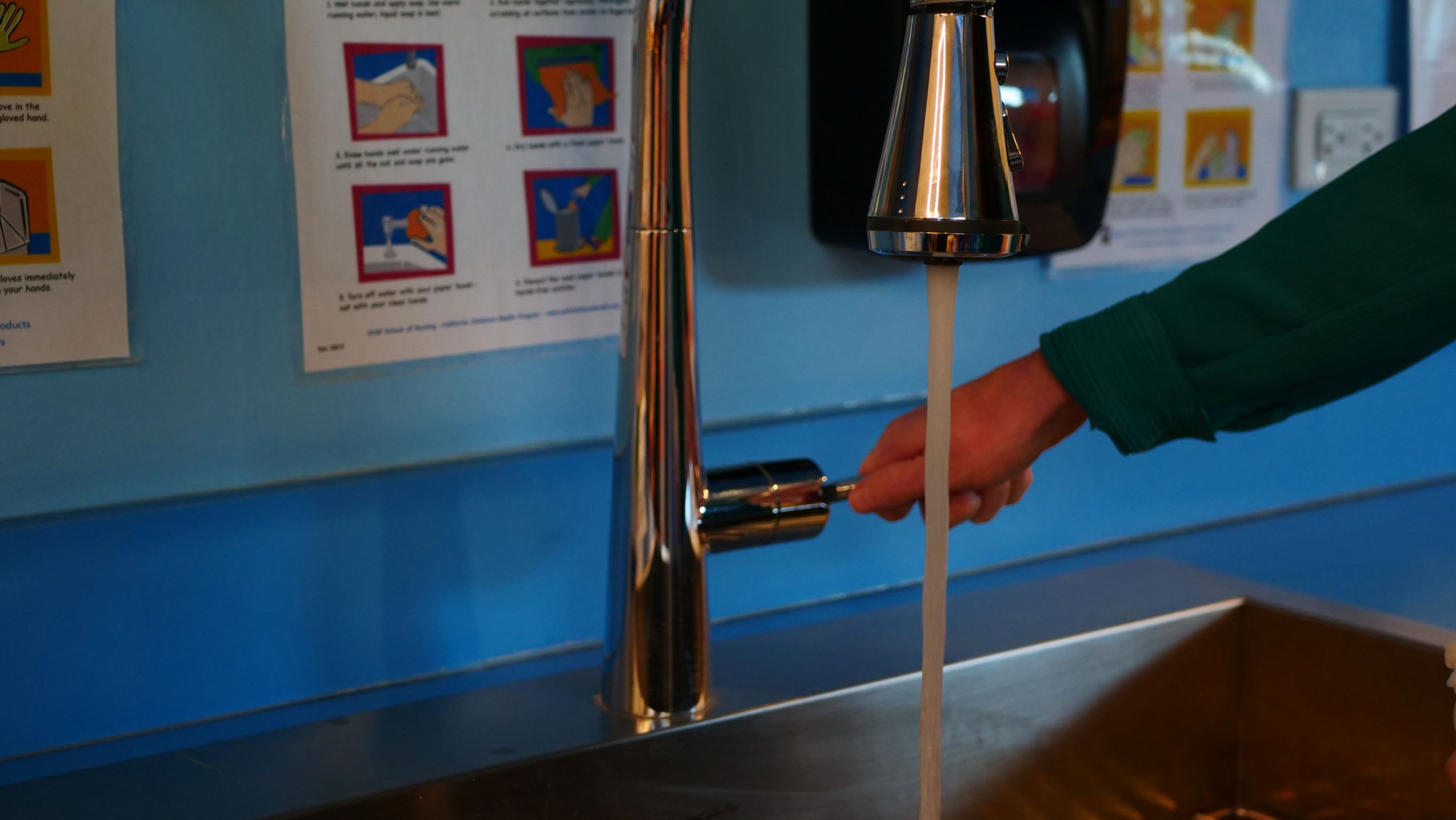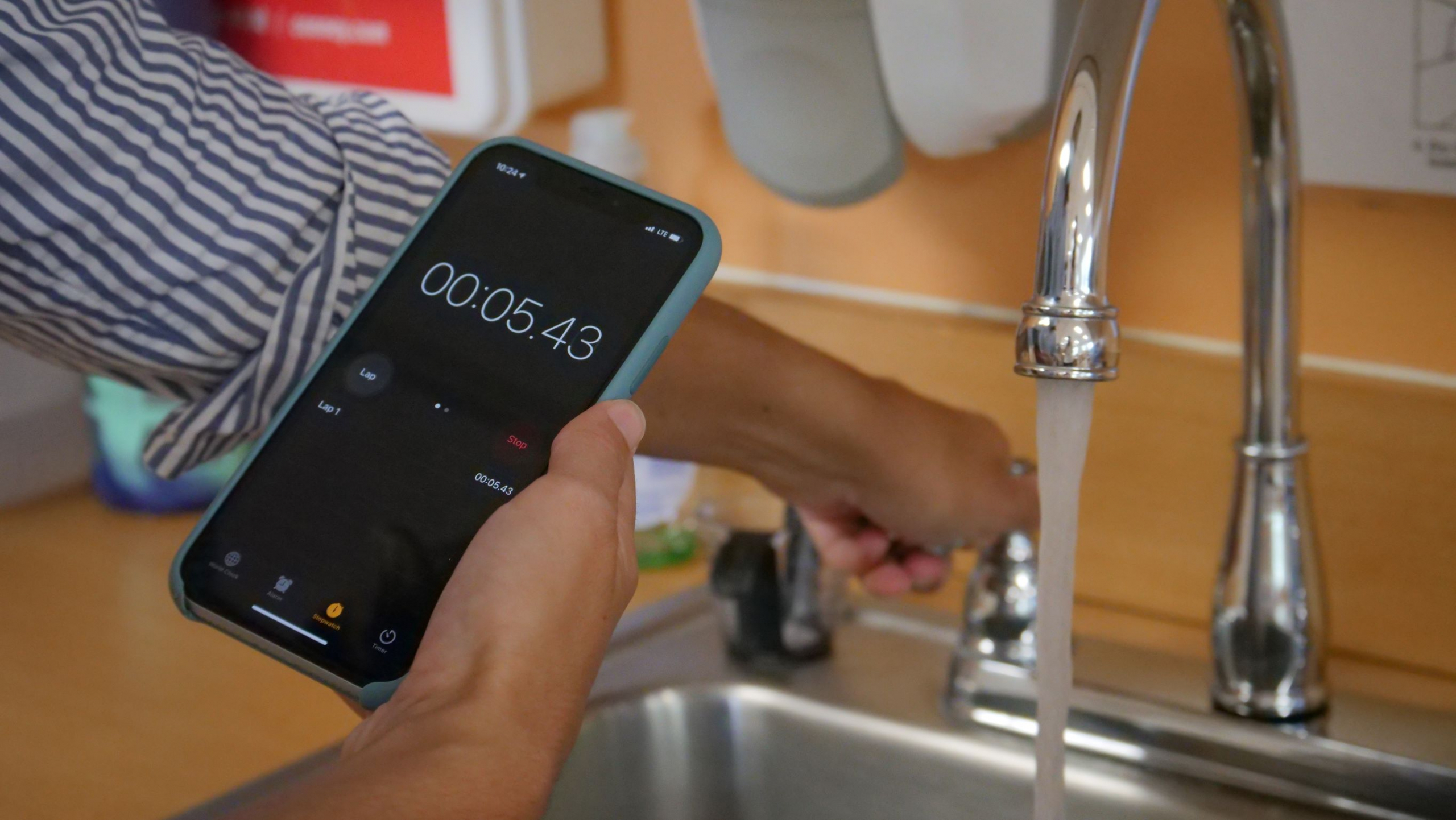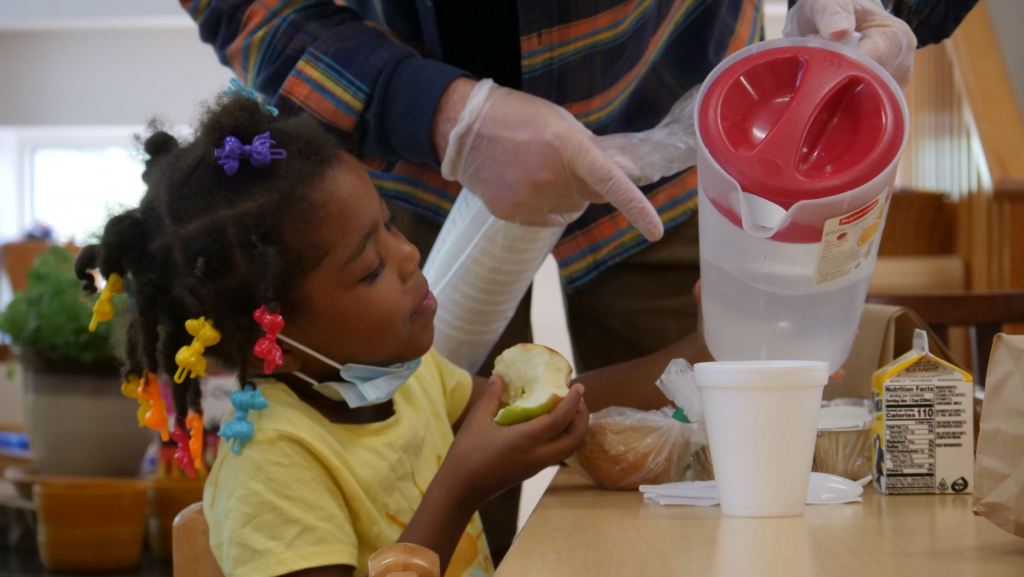It’s the last day of school and to celebrate, you throw a pizza party. You put a few leftover pieces in the refrigerator at your child care facility. When you come back after summer break, would you or the children take a bite of that now-months-old pizza? Probably not.
The same concept applies to the drinking water you use in your child care facility. When the facility is closed for a period of time—whether it’s a weekend or summer break—water sits unused in the pipes. This stagnant water may increase the release of lead and other harmful metals into the water and contribute to bacterial growth.
Just as you might toss that old piece of pizza out of the fridge, flushing is an easy and affordable action you can take to reduce the potential hazards of stagnant water.
What is flushing?

Flushing is the basic process of running cold water at a tap, such as a kitchen faucet, for a set period of time to clear stagnant water from the pipes before using it for drinking or cooking.
When you leave your facility at the end of the day, the water sits in the pipes overnight. When you return the next morning and turn on the faucet, the water you’re using is not new water.
The longer the water sits in these pipes, there is a greater chance for harmful metals like lead to leach into the water. Certain plumbing materials that are in contact with water for long periods of time can also make the water unsafe to drink. Flushing this stagnant water pushes the water through the pipes, clearing the way for fresher water that comes directly from your water source.
When do I need to flush my water?
The first thing to know is that pipes and plumbing are designed to be used.
The time period after which you should flush your water may be as short as overnight or as long as a summer break, or longer. For example, because of recent pandemic-related closures, many facilities—and the water within them—have been unused for long periods of time.
LeadCare Illinois spoke with Andrew Whelton, Professor of Civil Engineering and Environmental and Ecological Engineering at Purdue University and Leader of the Center for Plumbing Safety, to share some answers and guidance on the practice of flushing. “If you have fixtures that you do not use routinely, then you need to flush them before you use them,” Whelton emphasized.
Here, we present several scenarios in which you should consider flushing the water at your child care facility. Remember to use cold water whenever implementing a flushing program at your facility.
Flushing as Routine Practice: Routine flushing is one of the quickest ways to improve overall water quality at your facility. Establish a habit of flushing your facility’s water on a daily basis, especially at locations that are used for drinking or cooking. Every morning, turn on the cold water and let it run for one to two minutes. Then throughout the day before using the water for drinking or cooking, let the water run for about 30 seconds. If you suspect you are connected to a lead service line, let the water run up to 5 minutes to flush out potential stagnant water from the service line.

Following a Weekend Break: If your facility closes on the weekends, devote a little more time every Monday morning to flushing by following the Fresh Tap Flushing Procedure. This procedure involves turning on the cold water at each drinking water source and letting it run for one minute. Do this at each fixture in your facility, starting with the fixture that is closest to the point of water entry into the building.
To Reduce Lead at a Specific Fixture: If you’ve tested your water and found that lead is present at a fixture in the first draw sample but not in the 30-second flush sample, then flushing may help reduce lead levels at that location. Every morning let cold water run for two minutes then again for 30 seconds before using the water for drinking or cooking. Flushing should only be used as an immediate mitigation strategy as it requires staff to implement a behavior change before each use. To help remind your team to flush, place a sign with instructions above each fixture where flushing is recommended, and post a flushing log to keep track of when fixtures have been flushed.
Flushing After an Extended Closure: If your child care facility’s building has been unoccupied for an extended period, like a long summer break, you should flush the water before reopening. Work with your building’s maintenance staff or a plumbing contractor to implement a High Velocity Flushing Procedure to improve water quality.
“If you leave the school for several months, you need to get the expired water out,” Whelton explained. “The way to do that is to get clean water from your source, whether that’s a private well on site or your water main, all the way to your building, to the first point, and then drag that clean water through the entire plumbing.”
Consider flushing a regular “part of getting your classroom ready,” Whelton said. He recommended flushing daily for about one week before kids are scheduled to return to your facility. This ensures that you have enough time to properly flush [water] through the pipes before people come back and start to use it.
Flushing Before Reopening a Classroom, Tap, or After Fixture Replacement: In another scenario, suppose you need to re-open a single classroom or drinking fountain that hasn’t been used in some time, but the rest of your facility has been occupied and in use year-round. The water in that room could be flowing through a dead-end pipe, Whelton explained, which means that you’ll want to flush enough water through the fixture(s) in that classroom to ensure fresh water reaches the fixture. The fresh water, which is often chlorinated, will also reduce biological growth that may have occurred over time in the pipe. In this case, Whelton advised flushing the fixture two to three times per day for several days in a row before the room is in use.
If you have recently replaced a fixture, you should also flush your water a few times a day for several weeks. After flushing your water for several weeks, test the water for lead prior to letting children drink from the new fixture.
After Lead Service Line Replacement or Following Construction: Other important times to flush your water are after lead service line replacement or if the water main on your street has been replaced. Contact your water utility for instructions on flushing after lead service line replacement or check out Denver Water’s video on flushing after construction.
We hope this helps you understand the importance of flushing and how to get started at your own facility. Just think back to that old piece of pizza in the fridge. The next time you return to your child care facility, we hope that you and the children who spend time there can celebrate safer drinking water with routine water flushing – and a fresh pizza!
Additional Resources:
- US EPA 3T’s Flushing Guidance
- Denver Water’s Flushing Instructions Following a Lead Service Line Replacement
